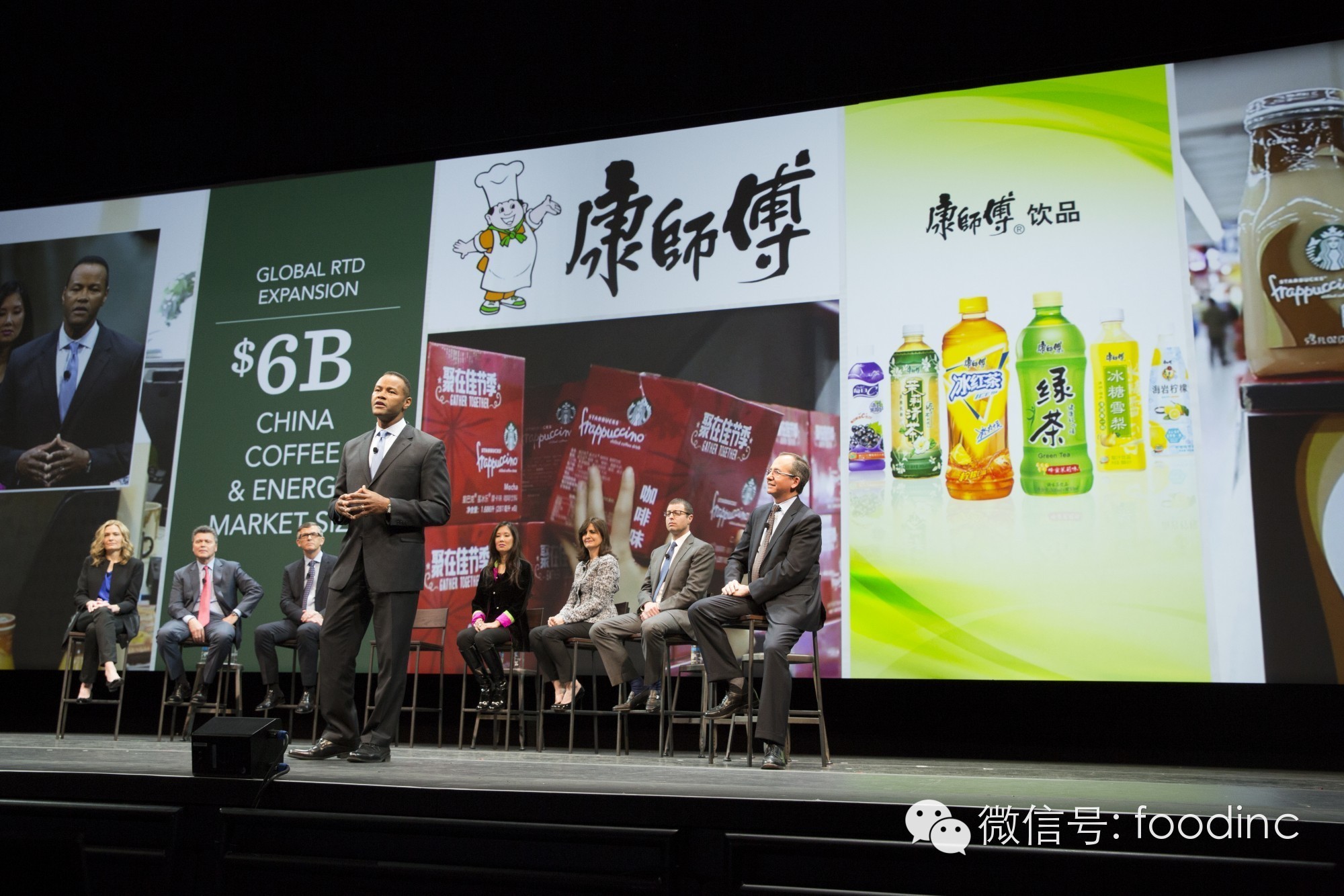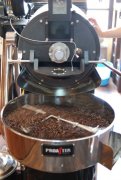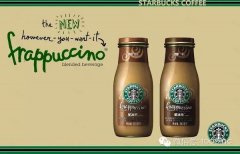Starbucks shareholders' meeting on China: store opening, on-site baking, Master Kang and Tea Brand conversion
The annual shareholders' meeting of Starbucks was solemnly held! Shareholder representatives from the United States and around the world are jubilant, tearful and worshiped to hear how Starbucks executives, centered on chairman and CEO Howard Schultz, turn brown coffee into green dollars.
The above rumors can be ignored, but this shareholders' meeting is indeed spectacular (below). According to the preliminary listening of the snack generation, Schultz has been introducing how to combat racial discrimination for a long time. No wonder they all say you want to run for president.
The snack generation is not a political name, so let's get back to business. '2014 was an extraordinary year, 'Mr. Schultz said. During the year, Starbucks' revenue, profit and share price all set records.
Twenty-three years ago, Starbucks IPO, which had 125 stores, had a market capitalization of $250 million, he said. Today, the company has 22000 stores in 66 countries, with a market capitalization of $70 billion, the highest ever, and the company's share price has risen 1200% since 2008. Since going public, the company has split its shares at 1:2 for six times in a row (there is real applause here).
According to the message reiterated at the shareholders' meeting, Starbucks will implement seven growth strategies. This includes becoming the employee's choice, maintaining coffee's leadership, expanding the store portfolio, creating new opportunities for customers to enter the store, driving the growth of consumer packaging products, building the tea brand Teavana, and expanding digital participation.
Next on the stage is John Calver, president of Starbucks China and Asia Pacific Business Group and president of the global new sales channel business and emerging brands group. Starbucks Coffee already covers 60% of the world's population by doing business in and out of stores in China and the Asia-Pacific region, he said. Over the next three years, Starbucks hopes to increase the number of stores worldwide from 22000 to 30, 000. Just this week, China and the Asia-Pacific region will welcome the 5000th store.

He pointed out that in the next five years, the size of stores in China and the Asia-Pacific region will triple, and the number of Starbucks stores in 15 markets in the region will double to 10,000.
He said that in the future, more than half of Starbucks' new stores around the world will come from China and the Asia-Pacific region, which will be mainly driven by Japan and China. Japan is the first market for Starbucks outside North America, dating back to 1996, now has nearly 1100 stores, and Starbucks will soon take full control of Starbucks in Japan. China, on the other hand, is Starbucks' fastest-growing market. In the next few weeks, Starbucks will open 1,600 stores here and 3400 in the next five years. Shanghai has become the place with the largest number of Starbucks stores in the world.
In addition, he said he saw the potential of roasting coffee on the spot in a huge international market, and revealed that Starbucks is currently choosing suitable on-site roasting sites in Japan and China.
Conway, president of global channel development, said that the mission of Starbucks channel development is to connect with people around the world, making Starbucks a place where they live, work and play. Currently, Starbucks products are sold in 39 countries. In the United States, only 20% of coffee consumption occurs in retail cafes, and the remaining 80% is outside cafes.
The fastest growing market for home coffee is single-cup products, and the main leader in the United States is K-Cups. Since its launch in 2011, Starbucks has shipped 2.3 billion cups of K-Cups. He said that in the Asian market, Starbucks store sales have become a bright spot, while the single cup category has yet to start.
"for this reason, international expansion is an important part of our consumer packaging product strategy." He said that given that ready-to-drink coffee and energy drinks are currently worth $6 billion and will grow by 20 per cent over the next three years, he is pleased to announce today that he has signed a strategic cooperation agreement with Master Kang, one of the largest beverage manufacturers in China.
Anne Young Scrivenner, president of Starbucks' tea brand Teavana, says tea has been a historical tradition for Starbucks since it opened its first store. At present, tea is the most popular drink consumed by consumers in the world, second only to water, with a global scale of 125 billion US dollars. Americans consume 800 million cups of tea a week, while iced tea is the largest drink consumed at noon.
"our vision for Teavana is to change and upgrade tea consumption around the world." 'it 's like what Starbucks has done with coffee for more than 40 years, 'she says.
She pointed out that although Starbucks currently operates in 66 countries, only seven have Teavana. Asia consumes a lot of tea. "Starbucks will be happy to bring tea innovation to Asia on the basis of respecting the traditions here." She revealed that all teas in Starbucks stores in China and Japan will be transferred to Teavana in 2016.
Chief digital officer Adam Brotman said Starbucks has built the world's "most successful" ecosystem in retailing. Mobile apps currently have more than 14 million active users and make nearly 8 million mobile payments a week. This is about 18% of the transaction volume of Starbucks stores, showing the strength and momentum of the mobile ecosystem.
Important Notice :
前街咖啡 FrontStreet Coffee has moved to new addredd:
FrontStreet Coffee Address: 315,Donghua East Road,GuangZhou
Tel:020 38364473
- Prev

Judging the blockage of exhaust pipe of coffee roaster and the method of investigation and cleaning Yang family roaster roasting coffee
How can we detect the occurrence of tube blockage in the roaster? When you find that one or more of the following symptoms appear, it is that obstruction may have occurred! 1. The heating rate deviates from the normal, and the temperature in the middle of the baking begins to rise faster than usual, and the more the tail, the greater the deviation. two。 It tastes sweet, but it tastes like a mist. 3. Lack of clean brightness (brightness)
- Next

Master Kang wants to work with Starbucks to make ready-to-drink coffee?
In a circular, the two sides announced today that they have signed a formal cooperation agreement to produce Chinese mainland ready-to-drink drinks and expand distribution channels in the local market. The circular described that the cooperation agreement will rely on the advantages of both sides, bring all Starbucks ready-to-drink product lines into the Chinese market, and strengthen the innovative ability of localization to meet the needs of Chinese customers. China needs instant coffee very much.
Related
- What is the standard process for the purpose of coffee cup testing? What is the difference between hand-brewed coffee and cup testing?
- How to use hand-brewed coffee paragon small golden balls? How does cold coffee lock in the aroma of coffee?
- Is American coffee black? What is the difference between American coffee and drip coffee?
- Unexpected! Well-known tea beverage brand Lele Tea will withdraw from the Zhengzhou market!
- Starbucks enters the fashion and beauty industry?! Netizen: Give me an ice American eye cream
- Why can American refills for free? The difference between Americano and American drip pot coffee
- Being chased out of the rain in front of Starbucks?! Store: Sheltering from rain under umbrellas poses a safety hazard
- The white moonlight has changed?! Lucky launches "Big Winter Pear American"
- Hand-brewed coffee three-stage method, high-sweet and universal brewing method to share! What does the high sweet water level of hand-brewed coffee mean?
- What is the difference between raw, refined and full espresso coffee? How to extract espresso and taste good?

